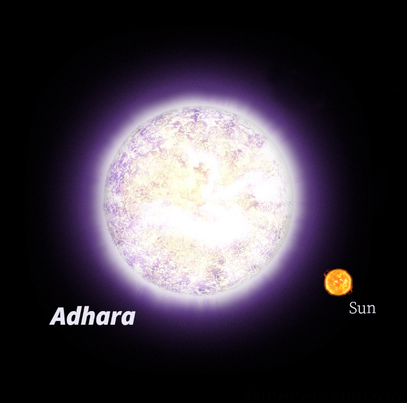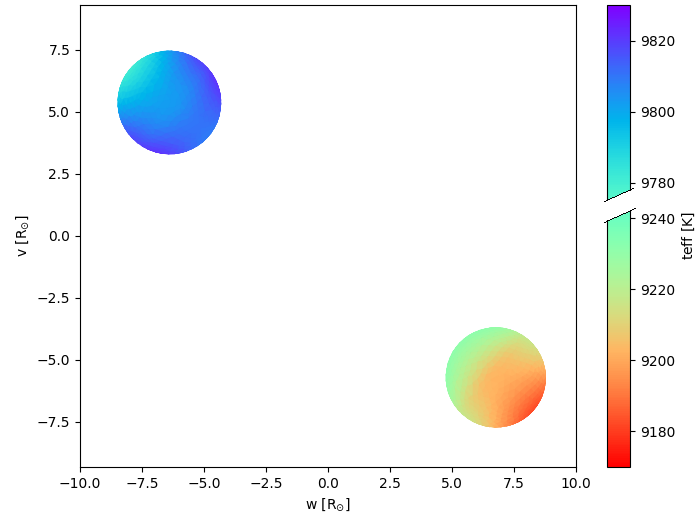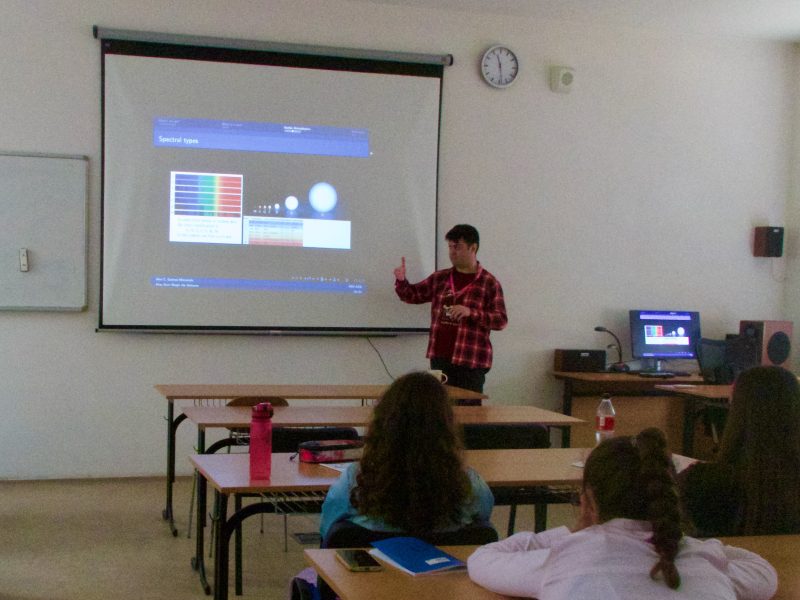Abstract
We aim to combine asteroseismology, spectroscopy, and evolutionary models to establish a comprehensive picture of the evolution of Galactic blue supergiant stars (BSG). To start such an investigation, we selected three BSG candidates for our analysis: HD 42087 (PU Gem), HD 52089 (ϵ CMa) and HD 58350 (η CMa). These stars show pulsations and were suspected to be in an evolutionary stage either preceding or succeding the red supergiant (RSG) stage.
For our analysis, we utilized the 2-min cadence TESS data to study the photometric variability and obtained new spectroscopic observations at the CASLEO observatory. We calculated CMFGEN non-LTE radiative transfer models and derived stellar and wind parameters using the iterative spectral analysis pipeline XTGRID. The spectral modeling was limited to changing only the effective temperature, surface gravity, CNO abundances, and mass-loss rates. Finally, we compared the derived metal abundances with predictions from Geneva stellar evolution models. The frequency spectra of all three stars show either stochastic oscillations, nonradial strange modes, or a rotational splitting.
We conclude that the rather short sectoral observing windows of TESS prevent establishing a reliable mode identification of low frequencies connected to mass-loss variabilities. The spectral analysis confirmed gradual changes in the mass-loss rates and the derived CNO abundances comply with the values reported in the literature. We were able to achieve a quantitative match with stellar evolution models for the stellar masses and luminosities. However, the spectroscopic surface abundances turned out to be inconsistent with theoretical predictions. The stars show N enrichment, typical for CNO cycle processed material, but the abundance ratios do not reflect the associated levels of C and O depletion.
Image
Adhara (ε CMa) is a binary star located about 430 light-years from us. The primary component (blue supergiant) is the brightest source in the sky in the extreme ultraviolet region of the electromagnetic spectrum and the strongest ionizing source of hydrogen in the solar neighborhood. About 4.7 million years ago, Adhara was the brightest star in the sky. (cc) Pablo Carlos Budassi, size comparison with the Sun added by Julieta Sánchez Arias.
Popular article in Czech can be found at ASU web page.
- Na čem pracujeme: Nejasnosti kolem vývojového stavu modrých nadobrů, M. Švanda (web ASU)
- J. Sánchez Arias, P. Németh a kol., Unveiling the evolutionary state of three B supergiant stars: PU Gem, ε CMa and η CMa, Galaxies v tisku, preprint arXiv:2308.12745
- Contact: Dr. Julieta P. Sánchez Arias, julieta.sanchez@asu.cas.cz



